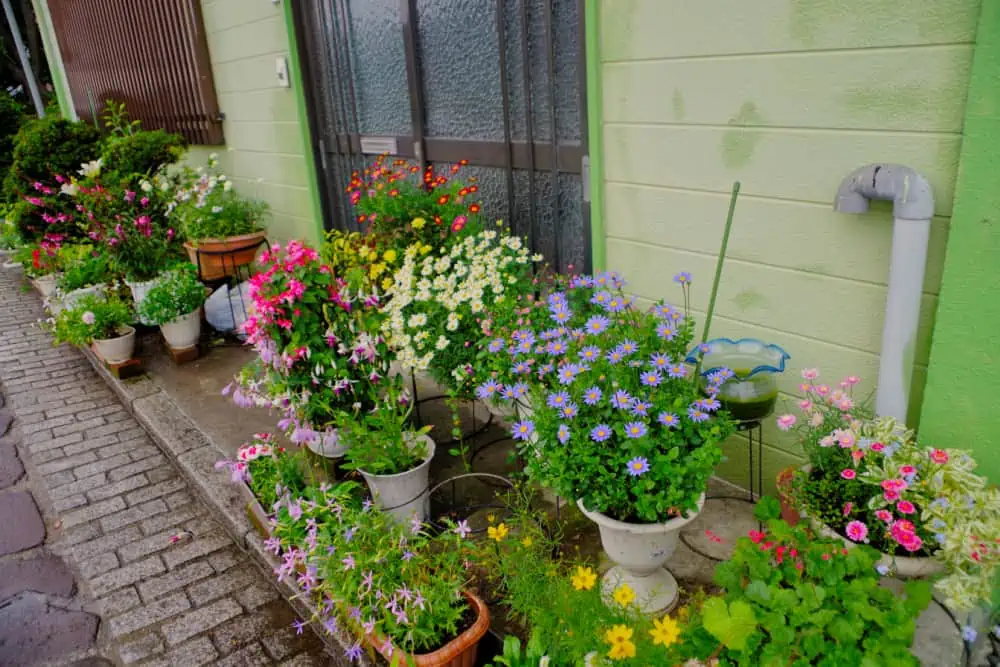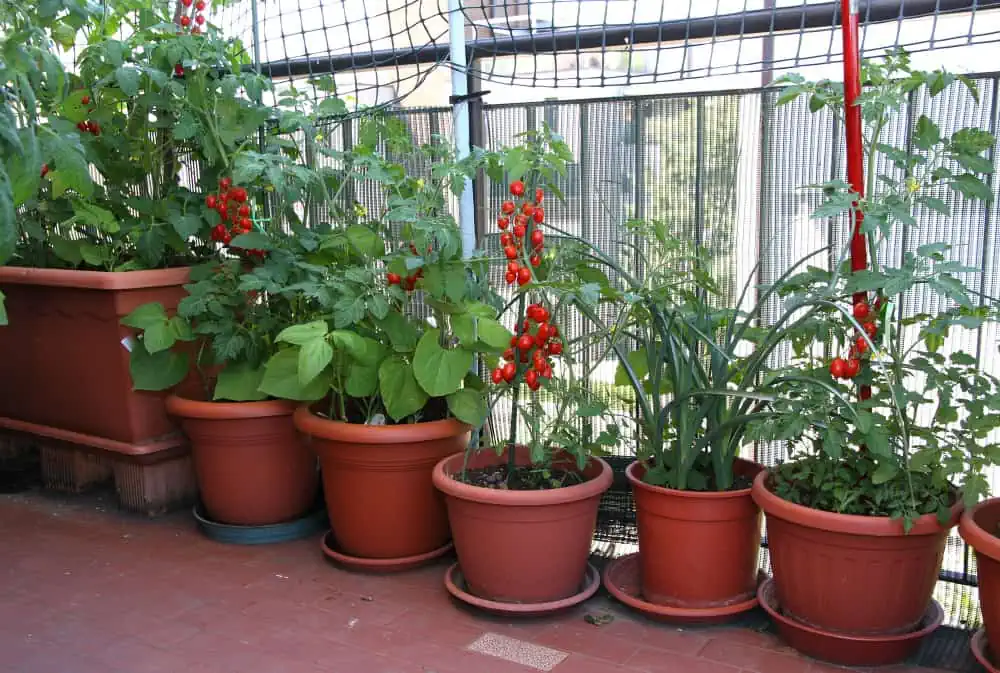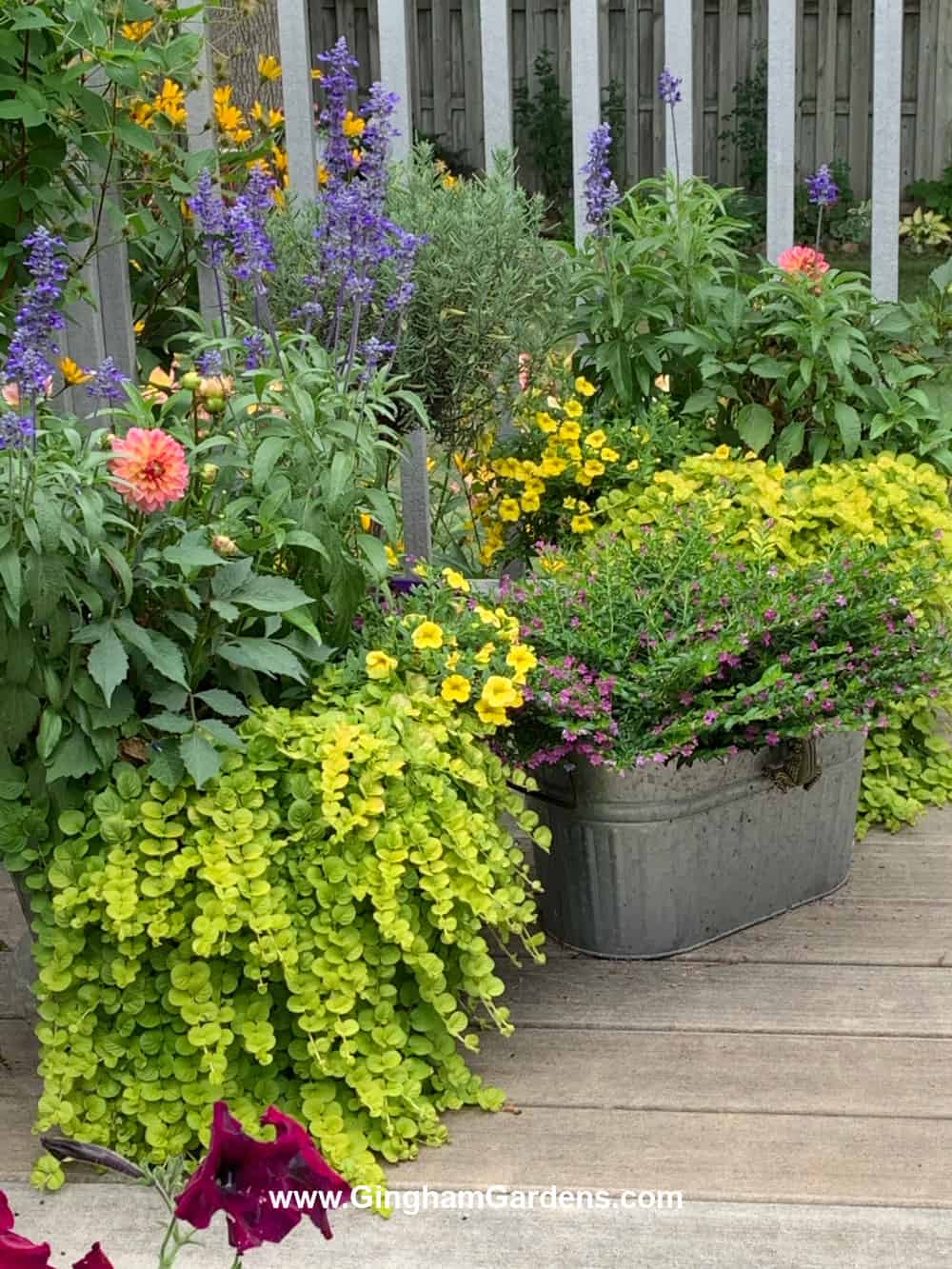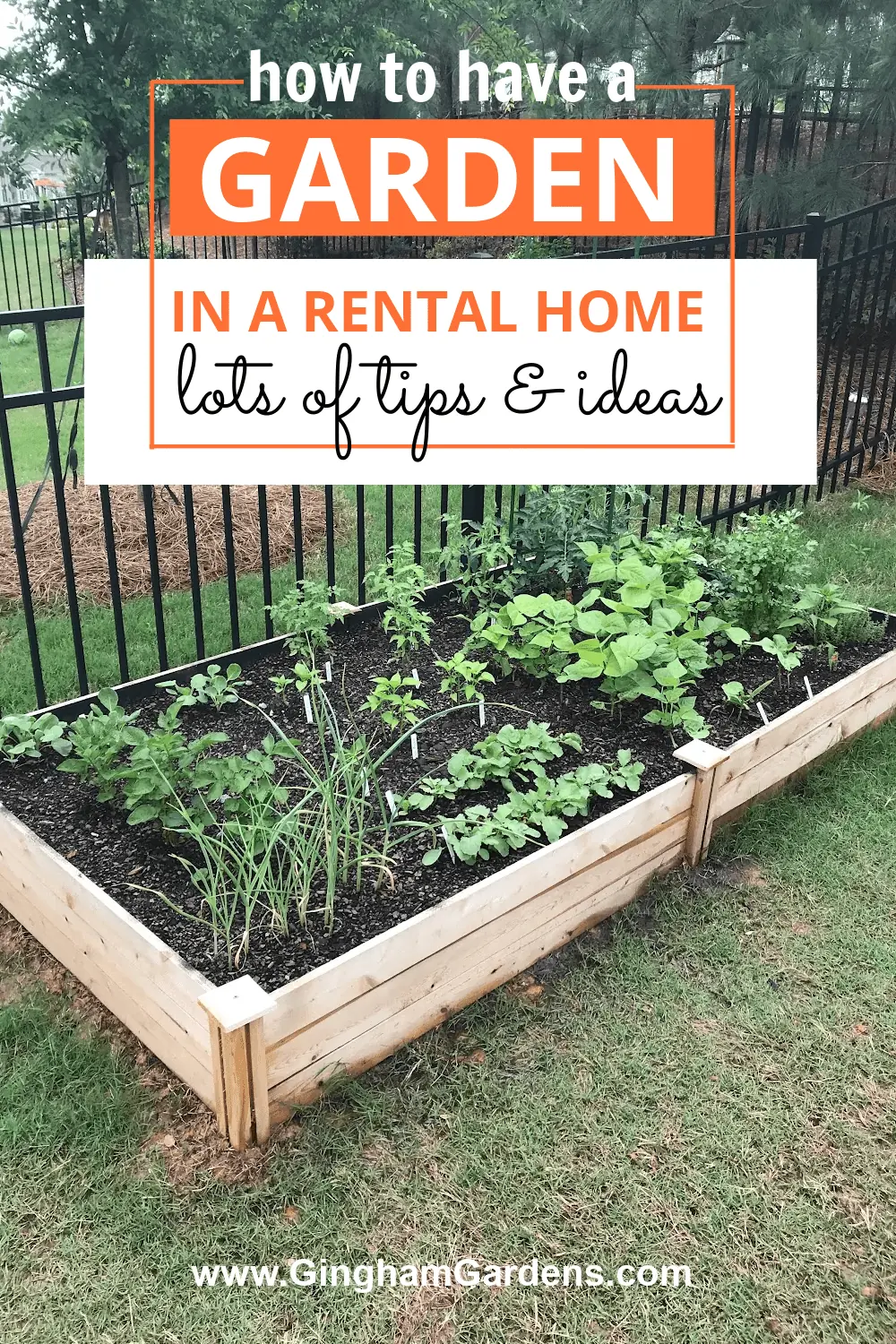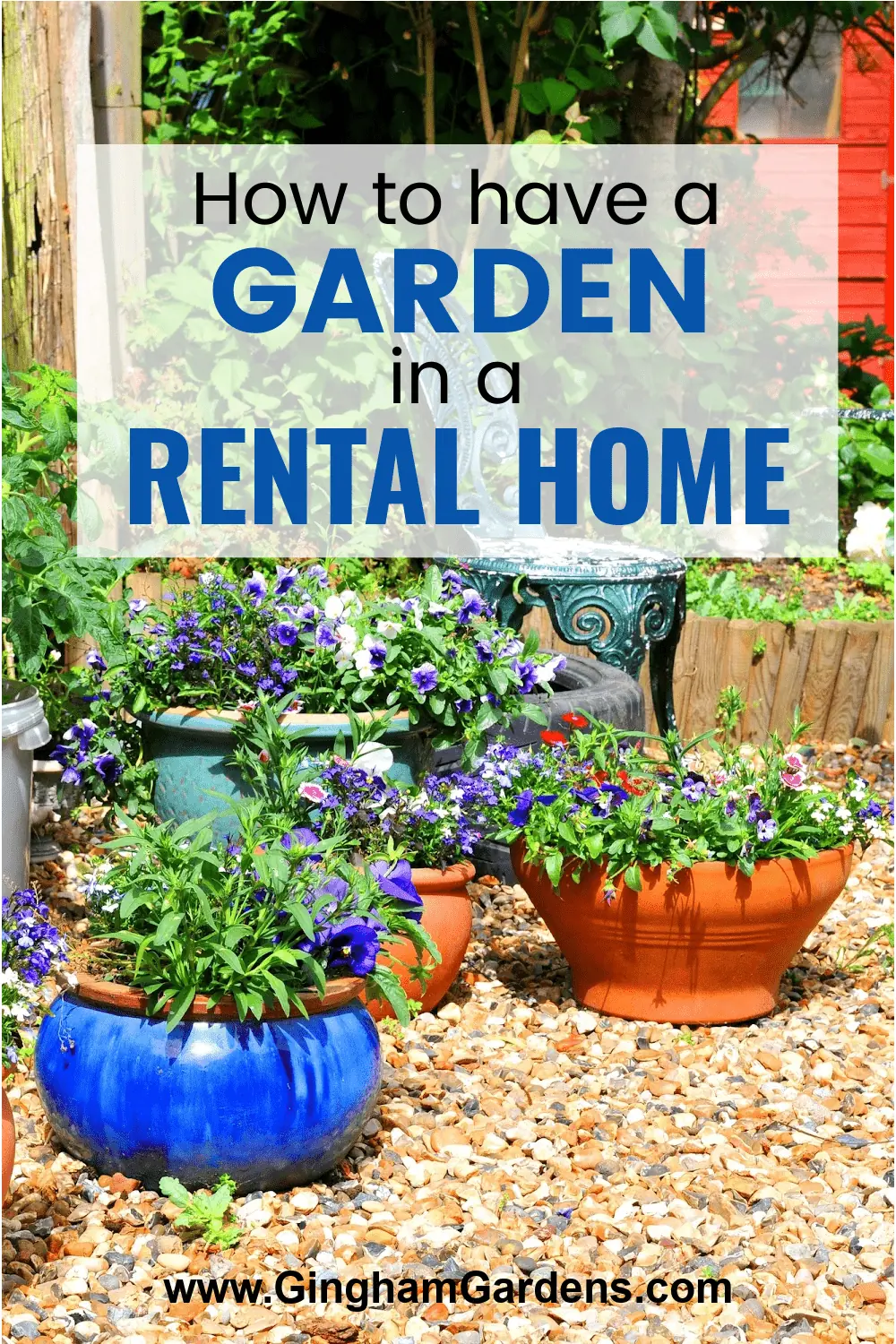Gardening in a Rental Home
Do you rent or lease your home? Do you want to have a garden, but feel like you can’t because you rent? Perhaps that’s just the stage of life you’re in. Or, home rental is your preferred choice for housing. Maybe, due to a job, you relocate a lot. No matter what your housing situation is, you too can have a garden. We have plenty of tips and ideas for gardening in a rental home.
I have gardened and planted flowers in an existing landscape while renting. Plus, I was able to get some input from others who garden while renting their home, as well as some input from landlords.
Tips for Getting Permission from Your Landlord for a Garden
It’s important to try and think of this situation from a landlord’s perspective. Landlords don’t want to have to clean up messes made by tenants. If your landlord is doing all the landscape maintenance, any garden beds will have to be mowed around. One landlord I talked to said they would probably not allow digging on their properties because of the risk of hitting utility lines. Landlords will likely not agree to permanent changes. Just because you think something is an improvement, doesn’t mean your landlord will.
The first thing to do is to take stock of the available outdoor spaces in your new home and decide how you want to use them. Pay attention to things like water supply and sunlight. Do you want to simply plant a few flower beds or create a small vegetable patch? Next, write your thoughts down and put your plans on paper and then approach your landlord. This is a good idea for anyone, but especially if you are a beginner gardener. Always keep in mind your intention of improving the landscape of the property, as well as improving the property’s curb appeal and practice how you will convey that to the landlord.
Ideas for Dealing with Your Landlord or Management Company
- Keep the lines of communication open and don’t be afraid to talk to them.
- Make a list of the things you want to accomplish.
- Tell the landlord exactly what you want to do, if it’s anything more that having a container garden on the deck or patio.
- If the property is a weed pit and needs a good cleanup, let them know you’re ready to take on the task.
- Don’t ask the landlord to pay for materials or supplies for your garden.
Most landlords are all for improving their property and making it look better. However, they likely won’t appreciate dead plants, lots of weeds, an unkempt outdoor space or a cluttered look. And, this may be what they are thinking when you tell them you want to have a garden. The key here is to keep your space looking good all summer long.
What if Your Landlord Says No to a Garden Space
It’s never fun to be told “no” especially when it comes to gardening. However, don’t discount the possibility of growing a garden even if your landlord is not for it. Have a Plan B ready to present if they don’t agree to your plan A.
Look around your local area to see if there are any places that have rental garden plots. Many churches and organizations have their own community garden plots for a reasonable annual fee. Community gardens are a great option because you can interact with other gardeners and potentially share garden tools, as well as ideas.
Consider waiting a year to show them what a great tenant you are and approach them again. In the meantime, keep any outdoor living spaces looking neat and tidy, and adorned with some well kept planters.
If the landlord is adamant about not having plants outdoors, you can always temporarily satisfy that green thumb itch with indoor plants.
Ways to Make a Temporary Garden
Just because you’re in a temporary situation and you don’t know when you will have to move on, doesn’t mean you can’t have a beautiful and productive garden.
Not only are container gardens the best way to garden in a limited space, but potted plants are also a great way to make a garden moveable. Although in container gardening, we often say, the bigger container the better, especially for vegetables, you will want to think of ways to lighten up a large container. Use a lightweight potting mix. Rather than filling a large container with all potting mix, use a layer of shredded leaves and grass clippings in the bottom.
An elevated planter box or raised garden bed is also an effective way to have a moveable garden. Depending on the gardening zone you are in, container plants can include edible plants, flowers, herbs, perennial plants, small evergreens and even small fruit trees. Seriously, you can have an impressive garden just by growing in planters.
Check out these articles for more tips and ideas for container gardening: Creative Container Gardening and Growing Vegetables in Pots.
How to Make the Best Use of a Small Space
There are still ways to have a successful garden in limited outdoor space. With a little creativity you can create a pallet garden. Just do a quick search on YouTube and you will see that the possibilities are endless. What about a vertical garden? Many vining vegetable plants like cucumbers, pole beans, peas, squash and many more will grow up a trellis or obelisk. A tomato plant will grow just fine in a five-gallon bucket. Check out this post and this post for more information on gardening in small spaces.
How to Have a Garden in a Rental Home on the Cheap
No one wants to invest tons of money in a landscape that you could be leaving. Well guess what, you don’t have to! Here are some great budget-friendly gardening tips for a rental house:
Use what you have. Use junk that you find on the property and repurpose it for use in your gardens. Look for old wood, stones or rocks, fallen tree limbs or branches. Use them to create garden borders or even a raised garden bed. Tree limbs or branches can be used to create a trellis or structure for plants to grow vertically on.
Oftentimes, I’ve found treasures buried or hidden in weed pits. Like perennial plants, flagstone, fieldstone borders, etc. You can make existing garden beds look amazing with a bit of hard work.
Lots of gardeners have too many plants (me) and are looking to sell them cheap, or give them away. Look on Facebook Marketplace, or local plant exchange groups or gardening groups on Facebook.
Check out this post for lots more tips on budget-friendly gardening.
As a tenant, can you remove plants from a rental property?
If you have plants growing in containers that you own, yes, take them with you.
What about perennial plants you purchased and planted in the ground? If you have an entire flower garden that you planted, it’s simply not right to deconstruct it. If you want to take the perennial plants that you purchased, replace them with something else. Don’t leave big holes in the garden, or a mess. If there wasn’t a garden there when you moved in, consider removing all the plants, raking the area level and sowing grass seed several weeks before you move so you can keep it watered and make sure it looks nice before you move.
As a general rule, if you’ve planted a vegetable garden plot or annual flowers in the ground, leave them and cut your losses. At least you got to enjoy them for a while. Make sure the landlord is okay with that and doesn’t want you to return the space to lawn.
Also, never remove shrubs or trees that you may have planted on the property. Remember, it’s best to keep an open line of communication open with your landlord. You don’t want to risk losing your security deposit, or being sued.
More Garden Ideas for Renters
Just a little side advice here… we have lived in many rental properties over the years and we’ve always treated them as our own. Take pride in your home no matter your circumstance and it will make you feel good, plus it’s the key to making your house feel like a home.
Always be considerate and leave rental property better than when you moved in.
If your landlord is local, be sure to offer them fresh produce from your garden.
When gardening at a rental property, always keep in mind that it is temporary, even if you plan on being there long term. Think of those that will come after you and keep the gardens easy and low maintenance.
Don’t be afraid to clean up an overgrown yard and make it the best it can be as long as it is your home.
I had lots of help with this article, but I have to give acknowledgment to a new cyber gardening friend, Myra for a lot of the inspiration here. She is an avid gardener, a creative DIYer and a kindred spirit. For more gardening inspiration and fun garden DIY projects, check out Myra’s Facebook page – My Mother’s Daughter. If you’re a renter, be sure to scroll through her posts to see some of the gardening projects she’s tackled at her rental homes.
I hope you are leaving with some helpful tips and ideas for gardening in a rental home. What’s your experience with renting a home and gardening? Or, perhaps you have additional ideas for renters. Leave a comment below and let me know what you think.
Happy gardening,
Joanna
More Great Things on Gingham Gardens
Sign up to receive our weekly newsletters full of gardening tips. You’ll also get access to our Gardening Resources Library and all our helpful gardening printables.
More places to find Gingham Gardens:
- Visit Gingham Gardens on Pinterest.
- If you’re on Facebook, Gingham Gardens is also on Facebook.
- Stop by Gingham Gardens’ Amazon store!
- Love Etsy? Come see us on Etsy too.
Save a pin to your gardening board on Pinterest, so you can remember this post later:

